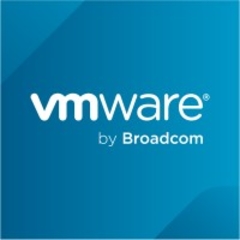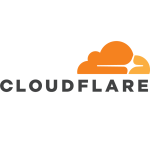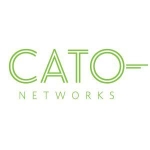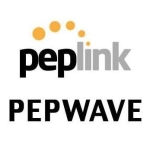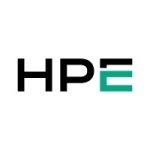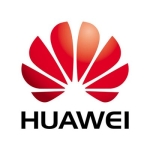Our main use cases have been for customers who have been traditionally using MPLS lines and are now moving into a lot more SaaS-based applications to transform the WAN infrastructure. A lot of our customers have end-of-life, end-of-support devices on the WAN and they are always looking for doing RFPs on cutting edge technology. Some of them happen to use a lot of VMware and Cisco portfolios in their data centers and they are constantly trying to see what solution fits best for them.
VMware has been chosen by many of our customers who do not want to do a lot of complex routing in their environment and want a very easy-to-use solution. The most valuable features are simple troubleshooting, Dynamic Multipath Optimization (DMPO), and cybersecurity.
DMPO is a technology that is similar to a proprietary technology that VMware has. Customers probably do not understand too much about it in detail but they know about the benefits of it in general. What it does is constantly monitors all different areas, such as latency, jitter bandwidth, artificial intelligence, and machine learning. It makes sure that if there is a case where there is a networking jitter contained in the link, it figures out how to maneuver your traffic elsewhere. This is all done automatically without customers getting slowed down on those poor links. The customers do not want to spend too much time researching these complex technologies which VMware automatically takes care of them. It benefits many IT teams by taking a lot of the burden away who are constantly juggling a hundred different other things as well.
The cybersecurity component is very important. VMware also has a lot of security components embedded into the SD-WAN, especially with the traditionally SD-WAN, and now a lot more integration through secure access with partnerships companies, such as Zscaler and other SaaS-based solutions. VMware has a lot of portfolios within themselves that can support many security use cases and if they cannot they have partnerships with industry leaders who can. For example, the Zero Trust Network Access (ZTNA) solutions through the Zscaler partnerships can help customers who want to move from traditional VPN solutions towards ZTNA based ones.
Overall as an experience, I have found that customers like the UI/UX experience that they receive from VMware.
There are customers that have very large routing and segmentation operations who do a lot of segmentation within their network and have complex routing requirements. VMware does not provide the facilities in terms of doing a lot of operations with routing tables, such as complex routing policies. It is more about that out-of-pocket experience that customers get out of VMware. There are other technologies for this type of use case from solutions, such as Versa or other WANs. These are for customers who are wanting to maneuver or configure things themselves, similar to DIY solutions, for them going to technologies, for instance from Versa, makes much more sense because they can do a lot more with routing, complex segmentation, and complex configurations. For customers who have complex service provider requirements, VMware and other solutions cannot support a lot of those use cases.
In an upcoming release, they should allow customers the flexibility to use mobile applications where they can go and check on the information about their networks. A lot of vendors, such as Meraki, have a lot more integration with the use of portals to a mobile application. Having this feature as an alternative to logging into a laptop would be beneficial. If you are a SaaS-based company why not make a mobile application as well. You might not be able to do configurations but at least monitor while away or on vacation.
I have been using this solution for approximately four years.
The software itself is very stable which our customers really like. They do not want to have buggy software or problems. I see the customers choose VMware over others and over time because of positive experiences with use cases, it becomes a trusted vendor and they tend to trust in the name as a brand in the future.
IT vendors are getting much more stable with the code, but nowadays everybody has more attention towards SaaS technology. Networking will just become another bundle to a lot of those providing this type of solution. Many vendors are getting into SaaS solutions and in terms of documentation, code releases, and features, there are probably more advancements. In SD-WAN specifically, a lot more features are moving into SaaS-based solutions. These new solutions are going to get reviewed and push the industries even further towards SaaS solutions it is the future.
The technical support is good.
The solution is straightforward to install compared to other solutions, VMware makes setup simple. SD-WAN vendors have a kind of simplicity embedded into them, just because of the nature of the software-defined components into it.
I have evaluated Zscaler and Versa.
The advice to others wanting to implement this solution is not to try and do everything yourself. A lot of customers choose this route and are negatively affected two years later. It is important to do a lot of proof of concepts and testing. Get the solution from a trusted service provider who can manage it for you because these technologies are really complex under the code. Having a trusted service provider who can work with you and can have a lot of benefits. If your company business is not running the WAN links, I would suggest just offload that burden to a trusted service provider because then you can focus on your business. Technologies are complex, and doing all of these operations through your own IP node is complex. A trusted service provider who knows what they are doing can offload a lot of that burden allowing for you to relax and actually focus on your main applications and business.
A lot of customers I have seen in the industry try to do all the operations themselves just because they think that it is good to insource everything. This is one of the areas that you should not be insourceed a hundred percent of your team because these technologies can be extremely difficult to do on a day-to-day basis. Service providers handle hundreds of customers and they know a lot more about what you are doing and can be very useful than if you did it by yourself.
I rate VMware SD-WAN an eight out of ten.

